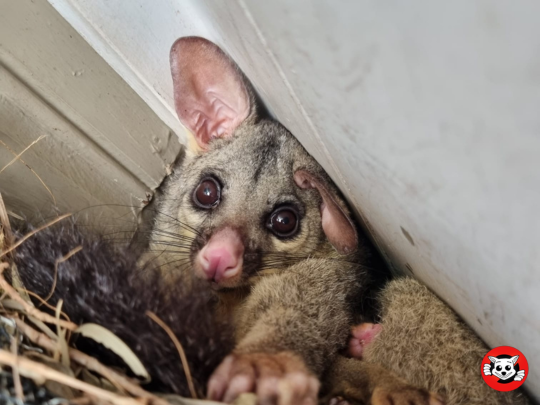Expert Tips and Safe Methods
In Australia, possums are a common sight in urban and suburban areas. These nocturnal creatures often find their way into residential roofs, causing concerns for homeowners.
While they may seem like unwanted guests, it’s essential to remember that possums are protected wildlife, and their removal must be done safely and humanely. This blog will guide you on how to handle this problem effectively.
Understanding Possums in the Roof
Possums are attracted to roofs due to their instinct to seek warm, dry, and safe places to nest. Roofs, particularly those with ample insulation, provide an ideal environment to breed and raise their young away from predators.
However, having possums on your roof can lead to several issues. Their noise, especially at night, can be a nuisance. They can cause great damage by gnawing on electrical wires, woodwork, and insulation. Moreover, their droppings and urine can lead to unpleasant odours and potential health concerns.
It’s important to note that while possums might be bothersome, they play a crucial role in our ecosystem by controlling pests such as cockroaches and spiders. Therefore, their removal should always be done safely for the animal and the homeowner. Stay tuned for our expert tips and safe methods to remove a possum from your roof.
Recognising a Possum Tenant in Your Roof
To ensure you’re dealing with a possum and not another type of critter, it’s important to recognise the signs. Here are some indicators that you might have a possum in your roof:
- Nocturnal Noise: Possums are nocturnal creatures, so you’ll likely hear them at night. Sounds can range from scratching noises to heavier thumps as they move around.
- Exterior Damage: Possums gain access to roofs by clawing or gnawing their way in. Evidence of this could be visible damage to your roofing materials or exterior structures.
- Distinctive Odours: Possums are known to leave a distinct smell behind. This can be due to their droppings or urine, or a possum dies within the space.
- Animal Sounds: Unusual animal noises, such as hissing or growling, can also indicate the presence of a possum.
Before moving on to removal steps, confirming that you have a possum problem is crucial. Misidentification could lead to unnecessary or inappropriate actions.
Why Hire a Professional for Possum Removal?
Handling a possum infestation might seem straightforward, but the task is best left to professionals. One of the key reasons is their extensive knowledge and experience. Professionals are well-versed with possum behaviours and habitats and know how to safely remove these creatures without causing undue stress to them or you.
Moreover, professionals come armed with all the necessary tools and safety equipment. This ensures that the removal process does not lead to any harm to the possum, the property, or to themselves. They have the right tools to trap the possum, safely navigate your roof, and ensure the possum is unharmed during the process.
In addition, possums are protected under Australian law, meaning their removal must adhere to certain legal guidelines. Professionals are aware of these laws and ensure that their removal methods are fully compliant, ensuring you don’t inadvertently break the law when resolving your possum problem.
Safety is another crucial factor. Removing a possum can involve working at height and dealing with animals that may become defensive. Professionals are trained to deal with these situations, mitigating risks effectively.
Finally, there’s efficiency to consider. Hiring a professional service may seem like an expense, but it can save you considerable time and potentially costly repairs that could arise from DIY removal attempts.
Keeping Possums at Bay After Removal
Once you’ve successfully removed the possum, your next goal is to ensure your roof remains possum-free. This begins with thoroughly inspecting your home to identify potential access points. These could be holes in your roof, wall gaps, or loose vents. Sealing these points is crucial as possums can squeeze through surprisingly small openings.
You should also consider the environment around your home. If you have trees near your house with branches that overhang or touch your roof, it’s time for a trim. These branches provide easy access for possums to your roof, essentially acting as bridges.
Another important step is to secure your trash. Possums are opportunistic eaters and are known to scavenge in rubbish bins. Ensuring that your bins are securely closed can go a long way in deterring these creatures.
Lastly, numerous products in the market can help deter possums from your property. These include motion-activated lights that startle them or specially formulated sprays that keep them at bay. By taking preventative measures, you can ensure your home remains a possum-free zone.
Conclusion
Dealing with a possum infestation is not just about removing the animal but about doing so safely and humanely. Possums are a protected species in many regions, and their removal requires careful handling and compliance with wildlife laws. Attempting to handle the situation alone can inadvertently lead to harm for the possum or damage to your property.
Professional services offer an effective solution, combining expertise, experience, and tools to complete the task. These professionals understand possum behaviour, know how to navigate removal risks and know the legal requirements for handling these animals. They can ensure the possum’s safe removal while also safeguarding your property.
Don’t hesitate to contact professional services like Possum Busters when facing a possum issue. Our team can provide further information and assistance, helping you address this problem most effectively and humanely.


